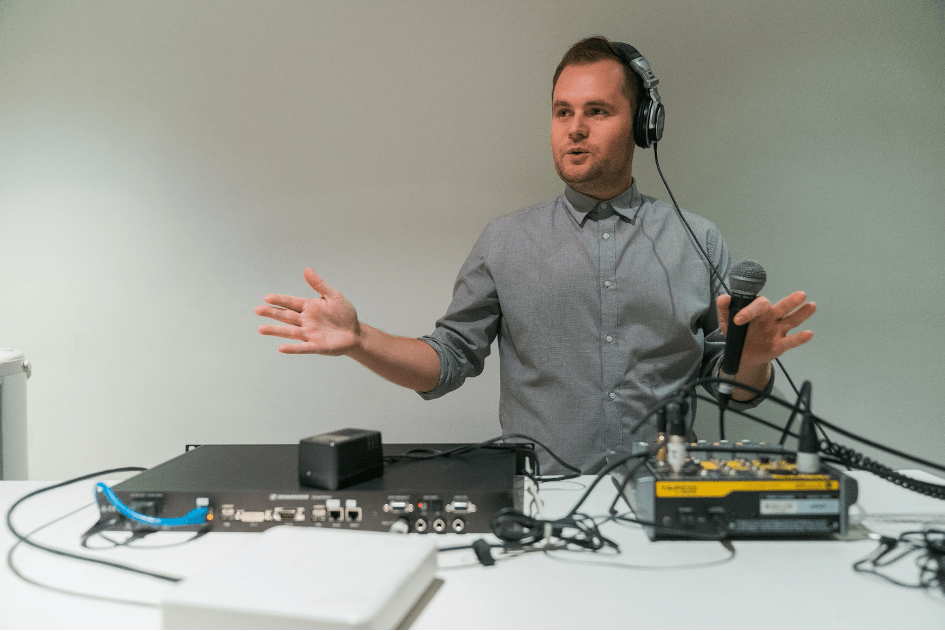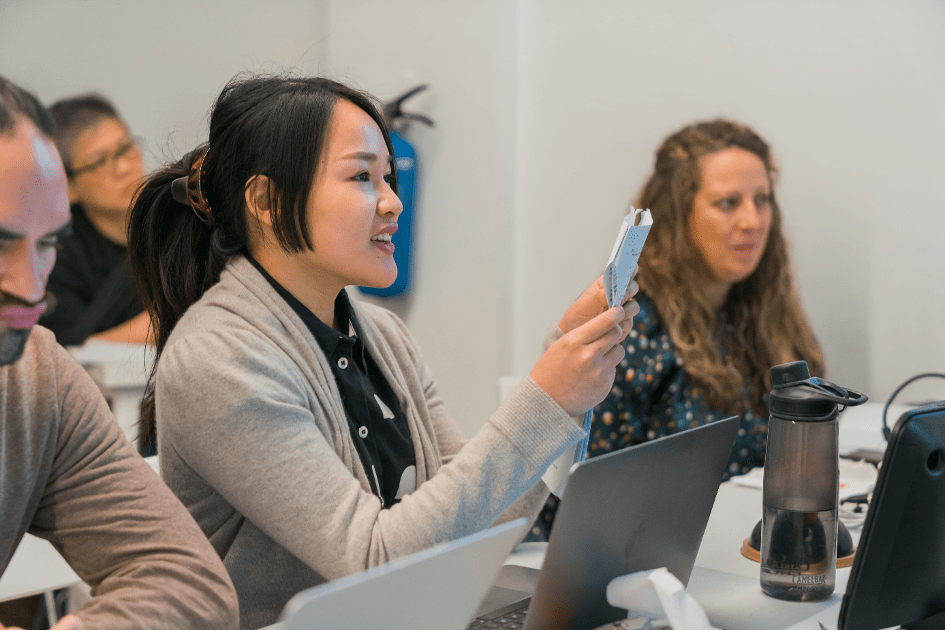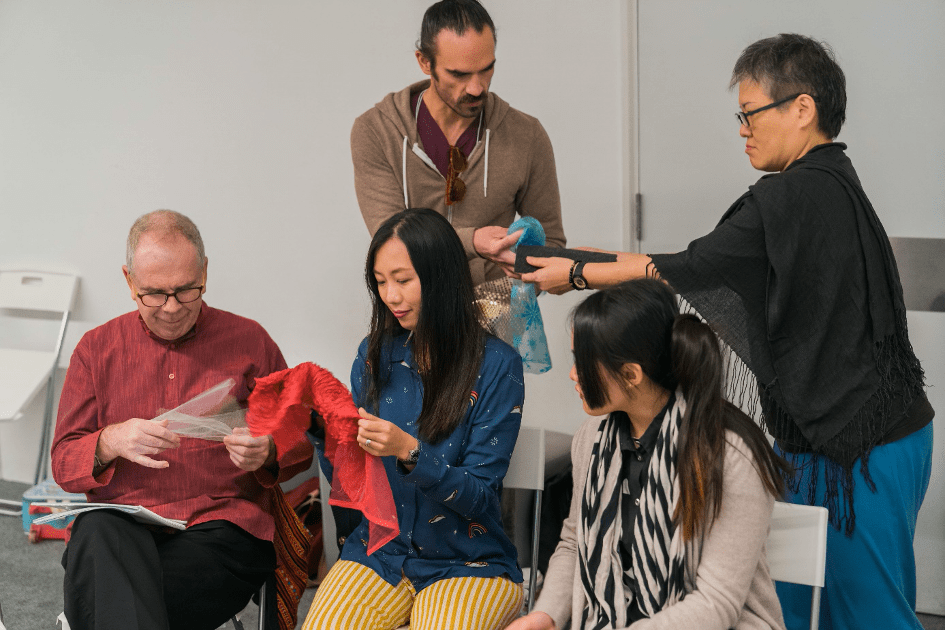Making the Arts More Accessible for Persons With Disabilities
01 Jan 2019
Paul Adams, SRT’s Manager for Learning and Management, giving a brief on the Audio Description technology and software.
Temasek Foundation has partnered with the Singapore Repertory Theatre (SRT) with a shared goal to enable the arts to be more accessible for persons with disabilities.
Supported by the David Marshall Endowment, the Access Development Programme is aimed at making the arts accessible to everyone by providing additional support for patrons who might otherwise feel excluded from enjoying live performances. The programme is led by SRT, and offers a series of training opportunities through a newly formed Access Arts Hub – a collective bringing the industry together to make more arts venues accessible and disability friendly.
With our support, the KC Arts Centre (Home of SRT) also has the most updated Audio Description technology installed in their theatre to cater to patrons with vision-impairment. These patrons can easily access the Audio Description service by downloading an app onto their mobile phone prior to the performance.

Seren Chen from the Singapore Arts Museum practises her narration, as trainer Kari Seeley (far right) listens and provides coaching
Technology aside, training for arts practitioners is essential. Over six days in December 2018, trainers from Australia were invited to run a course for arts practitioners across the industry to learn how to audio describe and guide patrons with vision-impairment. One activity tasked participants to walk around the theatre’s vicinity wearing glasses that gave them a vision impairment and understand what it was like to be guided.
Kari Seeley, the Audio Description trainer and voice professional, highlighted that the provision of Audio Description allows those with vision-impairment to enjoy live performances and have meaningful conversations about these performances with their family and friends. Vision-impaired audience just need the explanation of the visual elements, as they can hear the dialogue and sound effects. Kari added that using the right vocabulary was also crucial, for example, using much simpler words to describe a children’s production as compared to an adult’s production.

Training participants feels the texture of costumes and props – a key element of the Touch Tour held for patrons with vision-impairment
Apart from learning how to audio describe, the nine participants also learnt how to conduct touch tours for vision-impaired patrons. These tours, conducted before the start of a performance, involve audience members being guided on stage to touch and feel the costumes and props being used in the production. This gives them a more tangible gauge of what they will hear in the audio description.
Audio Description need not only be for theatre performances, but can also be used in other settings such as art exhibitions and galleries. This was why the training was opened to arts practitioners from varied backgrounds. These practitioners also get to apply their skills by audio describing for SRT’s upcoming shows.
Apart from the Audio Description training and the provision of the technology, Temasek Foundation also supported the Disability Awareness training in October 2018, involving 71 arts practitioners. We hope to encourage more in the arts industry to participate in the Access Development Programme through the Access Arts Hub.